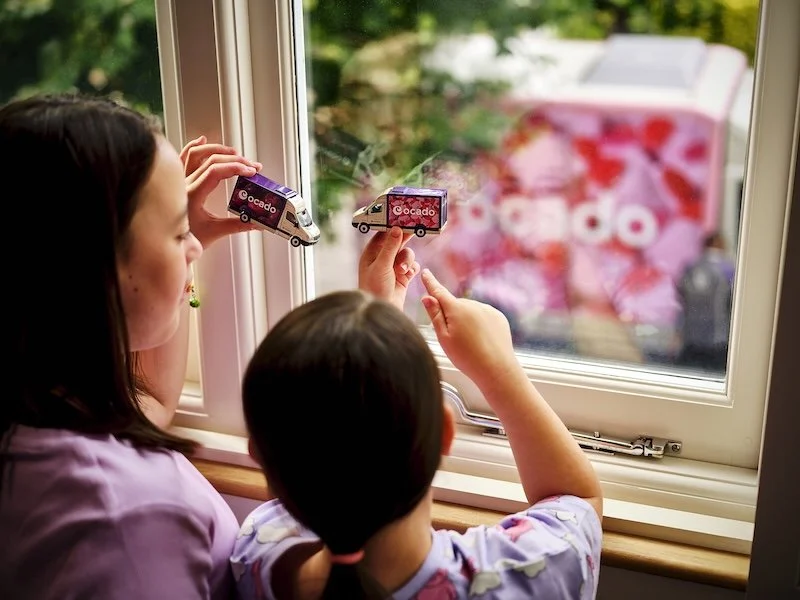The rise of drive through Click and Collect in retail
Jim Herbert, VP at BigCommerce EMEA, explains how retailers have adapted their business models as a result of the consumer shift to digital during the coronavirus pandemic.
For many retailers, connecting both their online and offline channels has been essential to continue operations throughout the outbreak. This has been a challenge, given consumers have relied heavily on online shopping for their goods and are now even more accustomed to ordering items online.
As a result, many brands have turned to alternative approaches to cope with the surge in online orders and to keep operations up and running in their physical stores.
Moving from 'clicks' back to 'bricks'
For many retailers, Click and Collect has been vital to surviving. Consumers have taken to the service due to its convenience. It also ensures customers can pick up their items in person rather than relying on delivery, especially when delivery times have been much slower due to demand.
For instance, DIY retailers such as B&Q have trialed contact-free Click and Collect services to keep physical stores open. B&Q set up in-store car parks where items are brought directly to the customer's vehicle.
This ensures customers can collect items in a safe and secure way, avoiding any unnecessary contact. It also offers a personalised shopping experience to customers – and gives retailers the opportunity to avoid redundancies for in-store staff.
Even with lockdown easing, Click and Collect shows no sign of slowing down. In fact, it seems to be gaining in popularity across all retail sectors. Asda has announced a doubling of its online grocery sales in the second quarter.
As such, the supermarket plans to increase its online sales capacity by another 50% in 2021. Record online grocery sales served as a notable standout in this announcement, with online capacity growing by 65% since March to more than 700,000 weekly slots. There was also a quadrupling of its Click and Collect sales.
Whilst lockdown has eased and retail stores have since reopened, customers are still concerned with their safety. Suggested safety measures in stores across the country have included separate entry and exit points, analysing store layouts to ensure two-metre social distancing, and controlling the number of visitors allowed in the store at one time.
“As they look to the future, retailers need to understand the role physical stores play at all stages of the buying process, from inspiration to collection, to returns – as well as the advantages of a strong online presence”
But even with these measures in place, consumers are still hesitant. Whilst shoppers continued to spend in July online despite stores reopening, footfall was still a third lower than last year according to the British Retail Consortium.This is because many people are still reluctant to go out and fewer are making impulse purchases.
Whilst lockdown has eased, retailers have learnt that whilst customers prioritising their safety, they still want the services available to them that were introduced during lockdown, such as contact-free delivery and contact-free Click and Collect.
The rise of drive through Click and Collect
One retailer at the forefront of this trend is Marks & Spencer. M&S recently announced it was trialing new Click and Collect technology in three of its stores, as part of its digital transformation plan to integrate in-store and online services for customers.
Using technology developed by Doddle, the retailer has launched two separate trials. At its stores in Hempstead Valley and Camberley & Longbridge, customers can make a contactless pick up of items in-store, with a chatbot informing them of their allocated shelf via text, WhatsApp or Facebook Messenger.
In comparison, at its Camberley premises, there is an option for a drive through collection, in which customers provide their car registration when booking a collection slot. The chatbot then confirms the allocated location the customer should drive to. The customer presses a link on their phone to inform staff once they have arrived.
M&S has shown how it has prioritised adapting its business model following the consumer shift to digital during the pandemic. This has also included the digitalisation of its Sparks loyalty scheme and the rolling out of Mobile, Pay, Go technology to 310 of its stores.
Investing in online channels
As Covid-19 continues to severely impact the retail sector, GlobalData estimates that the financial cost of the virus is in the region of £12.6 billion. Bricks and mortar retailers that haven’t shifted their business model in line with the consumer shift to online shopping, such as Primark, have had their revenue streams hit the hardest.
The best way for retailers to ensure future success is a model that integrates both online and in-store customer experiences. As they look to the future, they need to understand the role physical stores play at all stages of the buying process, from inspiration to collection, to returns – as well as the advantages of a strong online presence.
Those that can successfully do both will reap the benefits, while those that can't are almost certain to be left in the dust.










Continue reading…